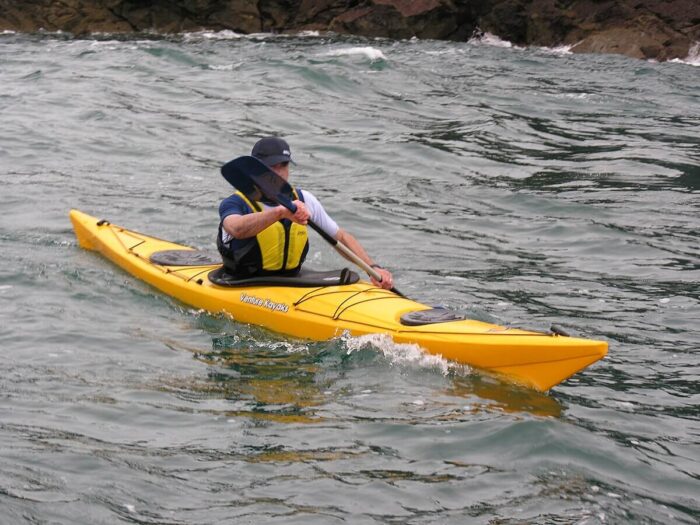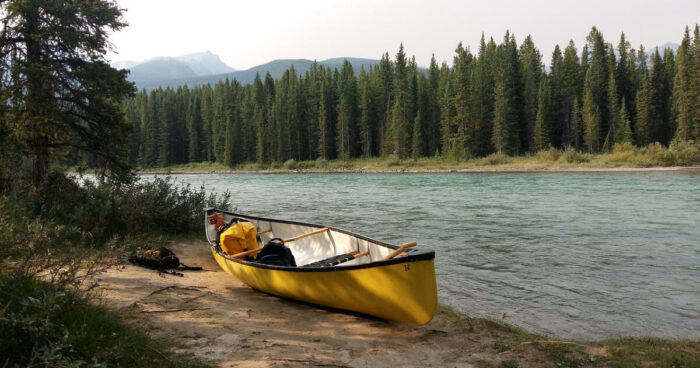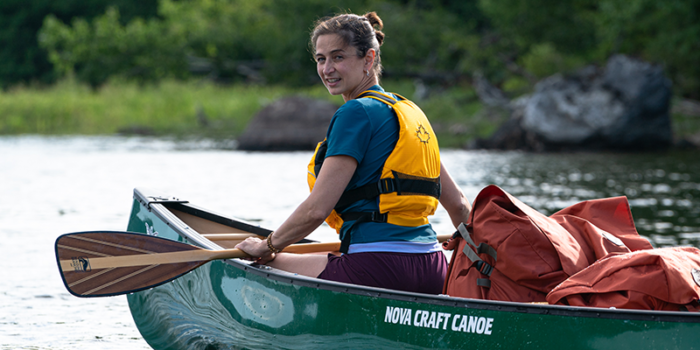You should choose the watercraft based on your preferred experience. Kayaking offers better maneuverability and speed, ideal for solo adventures in rough waters. Canoeing provides more space for gear and stability, better suited for leisurely solo trips on calm lakes or rivers. Now the choice is yours!
Canoe vs Kayak: Key Differences
| Canoe | Kayak |
|---|---|
| Open design with higher sides | Enclosed cockpit with lower sides |
| Paddled with a single-bladed paddle while sitting or kneeling | Paddled with a double-bladed paddle while sitting |
| Typically larger and heavier | Generally smaller and lighter |
| Offers more space for gear and passengers | Provides less space but better maneuverability |
| Generally more stable on calm waters | Tends to be faster and more agile |
| Commonly used for leisurely trips, fishing, and family outings | Often chosen for whitewater rafting, sea kayaking, and racing |
Kayaking: Basics and Equipment

Types of Kayaks
Kayaks come in various types, each designed for specific water conditions and activities.
- Recreational Kayaks: Ideal for beginners and casual paddlers, recreational kayaks are stable and easy to maneuver on calm waters like lakes and slow-moving rivers.
- Touring Kayaks: Longer and sleeker than recreational kayaks, touring kayaks offer better speed and tracking, making them suitable for longer trips on open waters and coastal exploration.
- Whitewater Kayaks: Shorter and more maneuverable, whitewater kayaks are designed for navigating rapids and fast-moving rivers. They feature a planing hull and reinforced construction for durability.
- Sea Kayaks: Also known as touring or expedition kayaks, sea kayaks are longer and equipped with storage compartments for extended trips on open seas. They provide stability and efficiency for covering long distances.
Essential Kayaking Gear
- Paddle: Choose a paddle with the right length and blade shape for your kayaking style and body size.
- Personal Flotation Device (PFD): A Coast Guard-approved PFD is essential for safety on the water.
- Spray Skirt: A spray skirt keeps water out of the cockpit, especially in rough conditions or during rolls.
- Helmet (for whitewater kayaking): Protect your head from impacts with rocks and obstacles in fast-moving water.
- Bilge Pump and Sponge: These tools help remove water from the kayak in case of capsizing or rough conditions.
- Safety Whistle and Signal Mirror: Important for signaling for help in emergencies.
Techniques and Handling for Solo Kayakers
- Entry and Exit: Learn proper techniques for entering and exiting the kayak to avoid tipping over.
- Paddling Technique: Use a relaxed grip on the paddle and engage your core muscles for efficient paddling strokes. Practice different strokes for turning, maneuvering, and maintaining speed.
- Stability: Find your kayak’s primary and secondary stability points and practice balancing to improve stability.
- Bracing and Rolling: Master bracing techniques to prevent capsizing and practice rolling maneuvers for recovery in case of a flip.
- Navigation and Route Planning: Familiarize yourself with navigation aids like maps, compasses, and GPS devices. Plan your route carefully, considering weather conditions, currents, and hazards.
Canoeing: Fundamentals and Gear

Varieties of Canoes
Canoes come in various types, each you can use for specific purposes and environments.
- Recreational Canoes: Designed for leisurely paddling on calm waters such as lakes and slow-moving rivers. They typically offer stability and ample space for passengers and gear.
- Touring Canoes: Longer and sleeker than recreational canoes, touring canoes excel in covering long distances on open waters. They provide better speed and tracking, making them suitable for multi-day trips and exploration.
- Whitewater Canoes: Shorter and more maneuverable, whitewater canoes are built to navigate fast-flowing rivers and rapids. They feature reinforced construction and specialized hull designs for durability and agility.
- Expedition Canoes: Also known as tripping canoes, expedition canoes are designed for extended wilderness journeys. They offer generous storage capacity for gear and supplies, along with stability and efficiency for paddling long distances.
Necessary Canoeing Equipment
- Paddle: Choose a paddle with the appropriate length and blade shape for your paddling style and body size.
- Personal Flotation Device (PFD): Essential for safety on the water, a PFD should be worn at all times while canoeing.
- Canoe Cart or Portage Yoke: For transporting the canoe over land between water bodies, especially useful on longer trips or when encountering obstacles.
- Waterproof Storage: Dry bags or waterproof containers to protect gear and supplies from water damage.
- Bailers or Bilge Pump: Tools for removing water from the canoe in case of capsizing or rough conditions.
- Safety Whistle and Signal Mirror: Important for signaling for help in emergencies.
Solo Canoeing Skills and Maneuvers
- Entry and Exit: Learn proper techniques for getting in and out of the canoe to maintain stability and prevent tipping.
- Paddling Technique: Master various paddling strokes for propulsion, turning, and maneuvering. Practice efficient paddle placement and stroke mechanics to optimize performance.
- Balance and Stability: Develop a sense of balance in the canoe and practice shifting weight to maintain stability in different water conditions.
- Solo Portaging: Learn how to carry and maneuver the canoe alone over land, using techniques like the Canadian or modified J-stroke to control direction and stability.
- Navigation and Route Planning: Familiarize yourself with navigation tools like maps and compasses. Plan your route carefully, considering factors such as current, wind, and obstacles.
Factors Affecting Choice: Kayak vs. Canoe

Stability and Maneuverability
Both kayaks and canoes offer stability and maneuverability, depending on their design and intended use. Kayaks tend to have lower profiles and enclosed cockpits, providing excellent stability in rough waters and making them easier to maneuver, especially for experienced paddlers.
Canoes offer higher sides and an open design, which can provide greater initial stability on calm waters but may require more skill to navigate in challenging conditions. Overall, kayaks are often preferred for their superior maneuverability, particularly in whitewater or coastal environments where quick turns and precise control are essential.
Speed and Tracking
| Aspect | Kayaks | Canoes |
|---|---|---|
| Speed | Generally achieve higher speeds with less effort due to sleeker designs and lower profiles. | Can achieve decent speeds but may struggle to keep pace with kayaks, particularly in open water or adverse weather conditions. |
| Tracking | Kayaks are designed for straighter paths through the water, offering superior tracking capabilities. | Canoes offer better tracking in windy conditions or when paddling against currents, thanks to their longer hulls and deeper keels, providing greater stability and directional control. |
Portability and Storage
When it comes to portability and storage, kayaks and canoes each have their advantages. Kayaks are generally lighter and more compact, making them easier to transport and store, particularly for solo paddlers or those with limited space. You can easily carry them on car rooftops or stored in smaller spaces when not in use.
Canoes, are heavier and bulkier, offer more interior space for gear and passengers, making them better suited for longer trips or outings with multiple people. Additionally, canoes may be easier to load and unload from vehicles or trailers due to their wider openings and flatter hull shapes.
Comfort and Accessibility
| Aspect | Kayaks | Canoes |
|---|---|---|
| Comfort | Typically offer ergonomic seating and adjustable footrests, providing a snug and supportive fit for paddlers of all sizes. | May offer more room to stretch out and adjust seating positions, suitable for longer outings or recreational activities like fishing. |
| Accessibility | Accessing and exiting can be more challenging, especially for individuals with mobility issues or limited flexibility. | Generally offer easier entry and exit, making them more accessible for a wider range of paddlers, including those with mobility issues. |
Versatility in Different Water Conditions
- Both kayaks and canoes are versatile watercraft capable of navigating various water conditions, including calm lakes, fast-flowing rivers, and coastal waters.
- Kayaks are best for challenging conditions like whitewater rapids or rough seas, offering superior stability and control with their low profiles and enclosed cockpits.
- Canoes are better suited for leisurely trips on calm waters or multi-day expeditions, prioritizing carrying capacity and comfort.
Conclusion: Choosing the Right Vessel for Solo Adventures
Kayaks and canoes offer versatility across various water conditions. Kayaks excel in rough waters with superior stability and control, ideal for whitewater or coastal exploration. Canoes prioritize comfort and capacity, making them perfect for leisurely trips or fishing on calm lakes. Paddlers’ preferences and intended use determine the best choice between the two.
References:
https://www.adirondackoutfitters.com/blog/six-key-questions-to-help-you-select-the-right-solo-canoe-or-a-kayak
https://oldtownwatercraft.johnsonoutdoors.com/us/blog/canoe-vs-kayak

Rockey is a kayaking enthusiast who has been kayaking with a local group for the last five years. He loves using kayaks while out on outings on the water or camping when the friends want to have a BBQ party somewhere on the bank of a local lake. More About James R Rockey at About Page Here: Authors
Based on his experiences with the different types of kayaks, he is sharing his opinion about kayaking tricks and required gears so that a beginner can get started right away.
Find his team on Twitter here. Happy reading!
